Jazz Keyboard Mistakes: How To Avoid Them
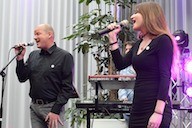 Would you like to learn how to avoid jazz keyboard mistakes? You’re in the right place.
Would you like to learn how to avoid jazz keyboard mistakes? You’re in the right place.
In the video below, Steve teaches one of his Jazz Inner CIrcle students one strategy to avoid errors in playing the head of the jazz standard “Georgia In My Mind”.
These tips will help you avoid often overlooked pitfalls in jazz keyboard performance.
Take 4 minutes and watch the video below. Steve will break down some of these techniques for you.
How To Avoid Jazz Keyboard Mistakes Video Tutorial
5 Jazz Keyboard Hacks To Avoid Mistakes
Now that you’ve taken a few minutes to watch the video above, let’s go further into how you can improve jazz keyboard accuracy.
1. How Forgetting About Rhythm Leads To Performance Disaster
 There are people who put their focus too much on the pitches and make rhythm a second priority.
There are people who put their focus too much on the pitches and make rhythm a second priority.
Deprioritizing rhythm is the biggest mistake in learning any kind of music.
The bitter truth is this: If you mess up one or two notes, maybe about 3% to 6% of audiences will care to notice. If you mess up the rhythm, the entire audience will notice that.
Rhythm is always the element of music that will give its overall feel. It’s what makes people move their bodies to the music.
A nice groove is what makes people go up and dance. Excellent rhythm is the bedrock of any kind of music.
This is the same thing when it comes to jazz keyboard accuracy. You need to nail the rhythms well for your melodies to sound great.
To get started, listen to various recordings of the tune you’re trying to learn. Tap your foot to the beat.
While listening to the recording, tap the rhythms of the melodies your right hand. Tap out the comping rhythm with your left.
If the rhythms seem too difficult to tap with both hands, try doing it one hand at a time at first.
This first exercise should take care of the rhythmic muscle memory for your hands.
But how about pitch memory? What’s the best way of handling that? Read on.
2. Why Singing Your Lines Is Important For Jazz Keyboard Mastery
 Audiation is essential for jazz keyboard mastery. This is the ability to hear and play music inside your mind.
Audiation is essential for jazz keyboard mastery. This is the ability to hear and play music inside your mind.
One of the best way to develop this skill is through singing your lines.
It doesn’t matter whether you’re trying to improvise a melody or learning the head of the tune. You need to learn how to sing the melody in tune first.
Audiation is very important for both sight reading music and playing by ear. You will be able to sight read better if you can imagine accurately the pitches in sheet music.
If you can properly hear in your mind’s ear any note, you’ll be able to replicate that using your voice or the piano.
How To Develop Audiation By Singing
Here are the steps towards developing audiation by singing your lines:
- Listen to the recording of a tune you’re learning and focus on the head of the tune. Repeat listening may be needed.
- Sing along the melody as the recording plays. Make sure that you match the recording pitch by pitch.
- Sing your melody without the recording to see if you have learned it. Check the recording for accuracy.
- Play the melody of the tune while singing simultaneously. Make sure that you match your playing note-for-note with the melody you are singing.
- After having done this a couple of times, try playing the melody of the tune without singing.
- Check and see if you can play the melody on the piano alongside the recording.
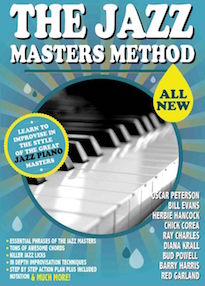 Speaking of learning really sweet lines, are you frustrated that you don’t have enough of those under your fingers?
Speaking of learning really sweet lines, are you frustrated that you don’t have enough of those under your fingers?
Would you like to learn secrets that many jazz legends use to improvise great-sounding lines?
Then check out the Jazz Masters Method.
Inside the Jazz Masters Method, you’ll learn incredible jazz licks from legends like Bud Powell, Bill Evans, and Herbie Hancock.
Get instant access to the Jazz Masters Method here.
Now that you know how to learn melodies through singing and rhythmic exercises, it’s time to gain some more skills to improv accuracy,
3. How To Master Key Signatures To Improve Accuracy
 Always remember that any piece of music will follow particular design schemes and patterns.
Always remember that any piece of music will follow particular design schemes and patterns.
Key signatures are among the most important of these design schemes to learn.
Understanding key signatures will teach you how to predict what notes to expect in a particular key.
This is because every key is based on a particular set of notes we know as scales.
If you know the particular scale in a given song or in a section of, then you effectively lower your chances of committing mistakes.
So, the most fundamental step in mastering key signatures is learning your scales. Whenever you practice scales, you become attuned to how the scale sounds like.
Practicing your scales will also help you come up with proper fingering to further improve keyboard accuracy.
Start out by learning your major and minor scales in all 12 keys. You don’t have to be able to play them fast at first.
All that you need to learn for this tip are the available notes of a specific scale as well as their positions on the keyboard.
Let’s go further into taking your jazz keyboard accuracy another notch.
4. How Learning Chord Scales Helps Acquire Jazz Keyboard Mastery
 It’s a really good thing that you know how to work your way around key signatures. However, keep in mind that it’s very common in jazz that the key may change from section to section.
It’s a really good thing that you know how to work your way around key signatures. However, keep in mind that it’s very common in jazz that the key may change from section to section.
It can even go as far as changing key from chord to chord. So, how do you deal with that?
One of the best techniques to deal with those key changes for every chord is to learn chord scales.
Chord scales can also provide a lot of color to your solos.
Whenever we say “chord scales”, these are simply scales that would fit well with a particular chord.
A simple way of looking at chord scales would be a modal approach.
How To Use The Modal Approach To Using Chord Scales
 Think about the major scale and how you can produce seven natural chords out of it.
Think about the major scale and how you can produce seven natural chords out of it.
After that, you only simply think of the same major scale starting with a different root note depending on the position of the chord along the scale.
If done correctly, you will come up with seven matching modes for every chord like this. Let’s take the key of C as an example:
I – Cmaj7 – CDEFGAB (Ionian or Major Scale)
ii – Dm7 – DEFGABC (Dorian)
iii – Em7 – EFGABCD (Phrygian)
IV – Fmaj7 – FGABCDE (Lydian)
V – G7 – GABCDEF (Mixolydian)
vi – Am7 – ABCDEFG (Aeolian or Natural Minor)
vii(b5) – Bm7(b5) – BCDEFGA (Locrian)
From this point, you can easily have the correct set of notes that you can use to build melodies with.
This also allows you to predict what notes might fall on particular chords at any given moment.
In reality, however, learning chord scales goes way beyond this “natural” modal approach.
Did you know that it’s possible to use more than one scale over a single chord?
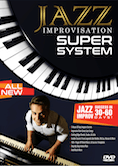 Knowledge of how to use multiple scales and modes over one chord is an essential skill for learning lines and improv. If you don’t know how to make use of such a skill, you’ll end up playing bland melodies.
Knowledge of how to use multiple scales and modes over one chord is an essential skill for learning lines and improv. If you don’t know how to make use of such a skill, you’ll end up playing bland melodies.
Fortunately, you can learn how to have control over these modes and scales through the Jazz Improvisation Super System.
The Jazz Improvisation Super System provides simple scale and modal hacks that let even total newbies play solos that sound fluid, creative, & musical.
To access the Jazz Improvisation Super System, visit this page.
Now it’s time for us to go beyond the scales to achieve jazz keyboard accuracy.
5. Why Learning Chord Shapes Helps Avoid Mistakes
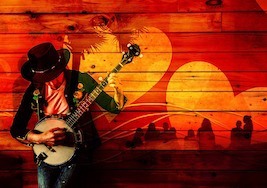 While it’s true that many melodies in jazz are based on scale notes, the strongest ideas focus on chord tones.
While it’s true that many melodies in jazz are based on scale notes, the strongest ideas focus on chord tones.
If you survey every jazz tune in the world, you’ll always find that the melodies actually outline chords.
If the best jazz melodies outline chords, then it’s very important to learn chord shapes.
Learning chord shapes will help you avoid mistakes in your melodies and lines.
There are two basic things you need to learn to use chord shapes in improving your accuracy:
- Learning chord shapes and arpeggios themselves.
- Being able to identify chords being outlined by the melody itself.
If you can associate the notes of a melody with the chord progression that accompanies it, you will be able to eliminate a lot of guesswork.
Using the chord shape approach narrows down note possibilities for many melodies.
This helps you focus on the strongest sounding notes over every chord and helps you sound good and accurate.
Now, let me ask. What else can you do to keep yourself from making the same mistakes?
Why Your Lines Still Sound Sour (And What To Do About It)
 Are you tired of making the same mistakes in your lines? Are you sick of flubbing on the piano all the time?
Are you tired of making the same mistakes in your lines? Are you sick of flubbing on the piano all the time?
Maybe you have practiced for hours on end. Perhaps you’ve put in the time in the woodshed.
The problem is that your practice time is out of focus. You may have been spending too much time on the wrong things.
The great news is that we can help you put that focus and dedication to good use.
With the Jazz Inner Circle program, you’ll learn how to establish an effective practice routine and help you learn the essentials for every performing jazz pianist.
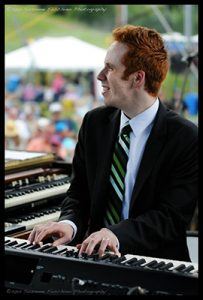 The Jazz Inner Circle provides the opportunity to work 1-on-1 with world-class jazz piano mentors to help you achieve your jazz piano goals.
The Jazz Inner Circle provides the opportunity to work 1-on-1 with world-class jazz piano mentors to help you achieve your jazz piano goals.
Inside the Jazz Inner Circle, you’ll discover:
- “The Jazz Piano Mastery Program” (Over $25,000 worth of jazz piano training resources, tools, practice templates, improv strategies, & tons more.)
- “The Ultimate Jazz Workout Training System.” This is where we implement a complete practice program to build your jazz piano talent in record time.
- Access to over 50 hours of high-level jazz intensive workshops.
Sign up for the Jazz Inner Circle right here.
Enjoy learning jazz how to avoid jazz keyboard mistakes. If you have questions, comments, and other tips we haven’t mentioned, feel free to drop a note at the comments section below.
I hope you’ve had a great time going through this tutorial. Always remember that we’re always here to support and help you along your musical journey.
